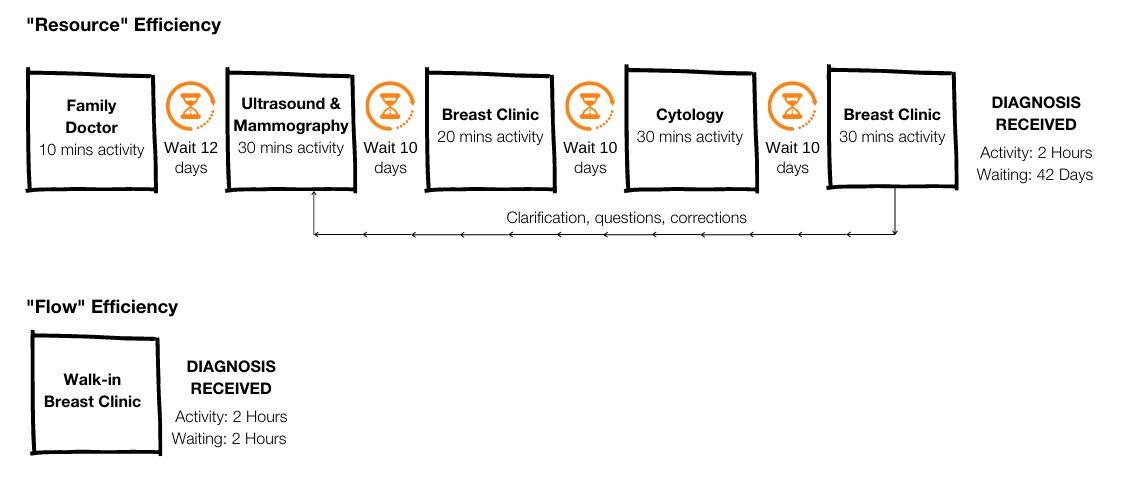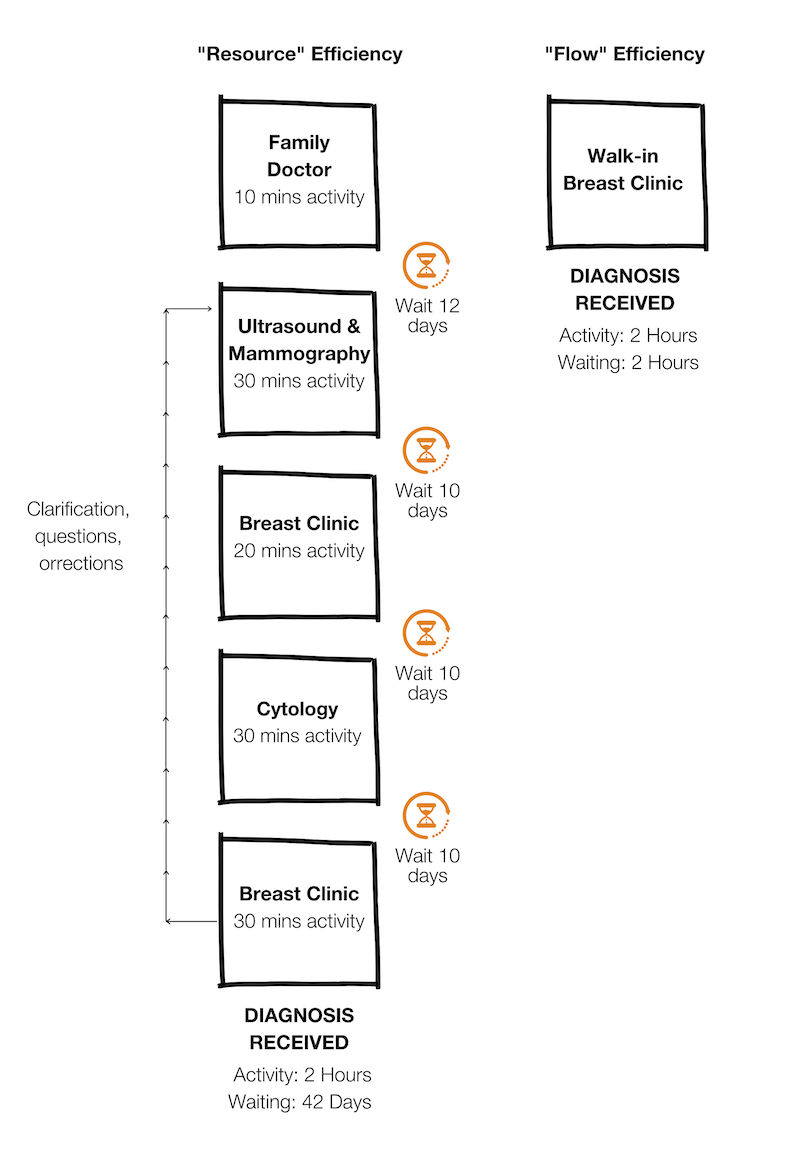While organization design/structure is often identified as an obstacle to delivering better performance, it can actually serve as a performance driver. There are major opportunities to be seized if organizational designers and decision-makers understand flow and think of the work as a system.
Applying an understanding of Flow Efficiency (optimizing the flow of work across all functional island in a business process) versus Resource Efficiency (optimizing the flow of work inside a specific functional island) can be a breakthrough in making organization designs more effective.
If you only consider factors that are visible on a process or design map, then it is likely that you are not going to be successful. We need to go beyond traditional analysis by examining the enablers of performance.
In the case above, inspired by Niklas Modig, the organization design is critical to achieving better performance.To achieve this, the organization designers and decision-makers need to understand how the work works as a holistic system, instead of simply trying to optimize each functional island. As well, there are a number of other challenges and opportunities:
Opportunity: By understanding the “problems to be solved” of the client’s organization design change request, and by unpacking those problems with the client, often it becomes clear that an organization’s real problems can only be solved in part by org design changes.
More often the root cause problems that cannot be solved by Org Design (e.g. Mindsets, Trust and Psychological Safety, Skills, Tools and Technology, among many others) can and should solved with other stakeholders properly equipped to deal with them. That is to say that the CHRO should involve the CIO and the COO (Chief Operating Officer) to address collectively the people, technology and process issues that underly the “org design” problem. But instead, the CHRO gets the blame when org changes do not work out.
Opportunity: As there is no “one-perfect design”, there is an opportunity to identify the countermeasures required to make each design achieve its desired purpose, or solve the target problems. With this countermeasure analysis, an organization can more confidently make decisions and proceed to implementing the new design, as they have identified and planned to address risks before they come to pass. This reduces fear, creates trust and can lead to better-executed designs.
In short, there are valuable lessons that organization designers and decision-makers can take from fields of Systems Thinking, Lean, Design Thinking and Agile/Scrum. Applying these approaches can increase the success of organization design changes, as well as the credibility of the Organization Design community as equal business partners.
In this content area we cover:
- What is Lean/Systems Thinking and how can they help improve organization design?
- Why Organization Design solutions are often over-delivered
- The costs of over-delivery
- How to apply Lean principles to assess a current state;
- How to use evidence to identify waste
- Understanding process flow, backlogs and the three main decisions of Lean
- Understanding value demand versus failure demand/preventable work, and quantifying cost of the latter
- How to identify and improve the flow of value to the client
- Principles to design simplified, streamlined processes that flow
- Understanding how organization structure and functional islands prevent flow, and what to do about it
- Creating an effective problem statement with your client
- Determine interrelationships between causes and root causes, and invisible but high-impact causes
- Identifying the Jobs to be Done of the Org Design solution
- Applying the Five Org Design Tests (Lean Test, Fit /ImplementabilityTest, In/Out of Value Stream Test, Combined vs Separate Disciplines Test, Matrix Test) to better understand gaps and to mitigate them
- Using Lean/Agile/Scrum techniques to rapidly implement improvements
- Assessing the success of the organization design project, and incorporating that learning into ongoing design projects.



